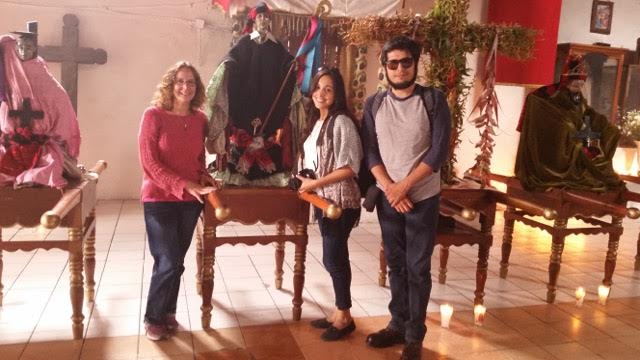
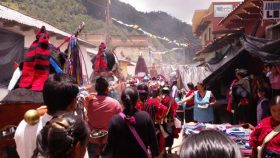
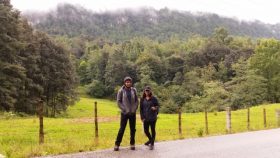
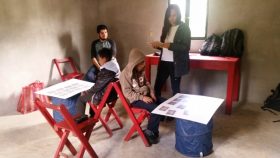
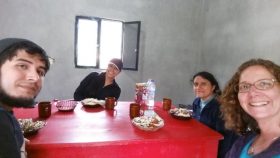
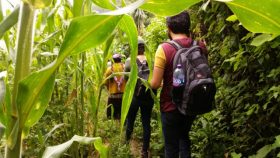
Two students from the Imperial Valley campus, Dianna Hurtado and Gabriel Sanchez, are spending July 10 – July 31 in the Highland region of Chiapas, Mexico. The students are joining Dr. Linda Abarbanell, an assistant professor in the Psychology Department, in her research in the Mayan community of Tenejapa, a rural, subsistence agriculture community where people still speak their native language, Tseltal and follow many of their traditional beliefs and practices. The students, both seniors majoring in psychology, have been helping to run experiments that look at how Tseltal speakers talk about locations and directions and how this affects how they remember spatial information. In Tseltal, speakers use words that are fixed to their environment, like “uphill” and “downhill” rather than body-based words like “left” and “right”. So where an English-speaker would say “Pass me the fork to the right of the plate”, a Tseltal-speaker would say “Pass me the fork downhill from the plate”. Some researchers have argued that these differences mean that speakers of different languages actually perceive and reason about space in very different ways. Dr. Abarbanell’s research, however, has found that speakers of both languages show a great deal of similarity and flexibility in their spatial skills. The students have been helping to extend this work by looking at how Tseltal-speaking children and adults reason about buildings in their environment and how they integrate large-scale map-space with their representations of objects inside a room.
In addition to their fieldwork in Tenejapa, the students have visited two more of the diverse Mayan communities in the region. In the nearby Tsotsil Mayan community of San Juan Chamula, they observed traditional healing ceremonies in the church involving candles, refrescos, incense and prayers led by a healer who passes a live chicken that is then sacrificed or eggs over a person to remove any impurities. In Tenejapa, they participated in the festival of San Santiago (Santsiako in Tseltal) where they saw the mayordomos who take care of the saints during their year, dress and then parade them through the streets of the municipal center. They will also participate in the festival of San Cristobal, the patron saint of San Cristobal de Las Casas, the colonial city where they are staying, and hope to visit some of the many attractions in the region, including Cañon de Sumidero and the Mayan ruins of Palenque.
The students will work on analyzing and writing-up their data when they return to campus in the fall and will present their work at student research conferences at both the San Diego and Imperial Valley campuses at SDSU and at professional conferences such as the Annual Meeting of the Western Psychological Association in Sacramento, CA, in the spring.
For the students, who plan to write senior theses on their work, this has been an enriching and eye-opening experience. Dianna Hurtado said that she feels fortunate to have had the opportunity to “experience research while enjoying this amazing culture. It’s one thing to learn from professors and textbooks in class, but being able to actually experience and conduct research on indigenous cultures first hand with my professor is priceless.” Gabriel Sanchez added, “I am experiencing and looking at all that I only knew through books, magazines and television. I am from Mexico, and this shows me that there is so much more to the country than I thought I knew.”
The students are fully funded through a grant to Dr. Abarbanell from the Summer Undergraduate Research Program at SDSU as well as through additional funds from the SDSU Research Foundation.

